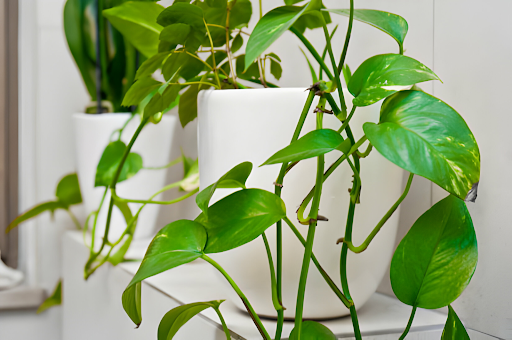Repurpose and Upcycle: Unleashing Creativity Through DIY Home Projects

Repurpose and Upcycle: Creative DIY Home Projects
In today’s world, where sustainability and creativity go hand in hand, repurposing and upcycling have gained immense popularity. These practices involve taking old or discarded items and transforming them into something new and useful, giving them a second life. Not only does repurposing and upcycling offer a unique and personalized touch to your home decor, but it also contributes to reducing waste and conserving resources. In this article, we will explore various creative DIY home projects using repurposed materials, provide tips for successful repurposing, highlight the environmental benefits, and answer common questions about this exciting trend.
Popular Materials for Repurposing
When it comes to repurposing and upcycling, a wide range of materials can be utilized. Let’s explore some popular options:
Wood
Wood is a versatile material that can be repurposed in countless ways. From old pallets to discarded furniture, there are numerous possibilities. You can create unique and eye-catching pieces like coffee tables made from pallets or bookshelves constructed from old ladders. By repurposing wood, you not only add character to your home but also give a new lease of life to materials that would otherwise go to waste.
Glass
Glassware often finds its way into our homes, but when it becomes worn out or unwanted, it can be repurposed in imaginative ways. Mason jars can be transformed into charming lanterns, while wine bottles can be used as elegant vases. With a little creativity, you can turn ordinary glassware into stunning decorative accents that breathe new life into your living space.
Metal
Old metal objects can be excellent candidates for repurposing and upcycling. Vintage toolboxes can be repurposed as unique and functional shelves, providing a rustic charm to your home. Tin cans can be transformed into vibrant planters, adding a touch of green to your indoor or outdoor spaces. Metal accents bring an industrial and eclectic vibe to your home decor while reducing waste and showcasing your creativity.
Fabric
Don’t underestimate the potential of fabric when it comes to repurposing. Old shirts can be transformed into stylish pillow covers, adding a personal touch to your living room or bedroom. Scrap fabric pieces can be pieced together to create a charming patchwork quilt, bringing warmth and nostalgia to your space. By repurposing fabric, you not only give new life to old textiles but also showcase your sewing skills and artistic flair.
Tips and Tricks for Successful Repurposing and Upcycling
While repurposing and upcycling may seem like a straightforward process, a little planning and preparation can go a long way. Here are some tips to ensure your projects turn out successful:
Choose Materials Wisely
When selecting materials for repurposing, consider their durability and potential uses. Look for items that are in good condition and have the potential to be transformed into something functional or visually appealing. Keep an eye out for discarded furniture, old tools, glassware, or fabrics that can be repurposed.
Plan Your Project
Before diving into a repurposing project, it’s essential to have a clear plan in mind. Sketch out your design, take measurements, and gather any additional materials or tools you may need. Planning ahead will help you stay organized and ensure that your project aligns with your vision.
Tools and Techniques
Depending on the materials you are repurposing, you may need specific tools and techniques. Invest in a basic set of tools such as a saw, drill, sandpaper, and paintbrushes, which will come in handy for various projects. Research different techniques for working with specific materials and learn new skills to enhance your repurposing capabilities.
Safety Precautions
While repurposing and upcycling can be fun and rewarding, it’s important to prioritize safety. Wear protective gear such as gloves, safety goggles, and masks when handling tools or working with potentially harmful substances. Ensure proper ventilation in your workspace and follow safety guidelines for using tools and materials.
Environmental Benefits of Repurposing and Upcycling
Repurposing and upcycling offer numerous environmental benefits that go beyond creative home projects. By giving new life to old items, you actively contribute to reducing waste, conserving resources, and decreasing your carbon footprint.
Reducing Waste
One of the significant advantages of repurposing and upcycling is the reduction of waste. Instead of discarding items, repurposing allows you to extend their lifespan and prevent them from ending up in landfills. By repurposing materials, you actively participate in the circular economy, where items are reused and transformed rather than disposed of.
Conserving Resources
When you repurpose and upcycle, you minimize the need for new materials to be produced. This conserves valuable resources such as wood, glass, metal, and fabric. By utilizing existing materials creatively, you contribute to the preservation of natural resources and help reduce the environmental impact of manufacturing processes.
Decreasing Carbon Footprint
Repurposing and upcycling also play a role in reducing greenhouse gas emissions and your overall carbon footprint. By reusing materials instead of buying new ones, you save energy and resources required for manufacturing, transportation, and packaging. This sustainable approach helps mitigate climate change by reducing the demand for energy-intensive production processes.
Conclusion
Repurposing and upcycling provide endless opportunities for creative expression while promoting sustainability. By giving new life to old and unwanted items, you can transform your home decor into something truly unique and environmentally friendly. Whether it’s repurposing wood, glass, metal, or fabric, the possibilities are limited only by your imagination.
Incorporating repurposed and upcycled elements into your home not only adds a personal touch but also allows you to make a positive impact on the environment. By reducing waste, conserving resources, and decreasing your carbon footprint, you become an active participant in creating a more sustainable future.
So, why not embark on your own creative DIY home projects? Explore the potential of repurposing and upcycling, and let your imagination run wild. Start small with projects like a coffee table made from pallets or mason jar lanterns, and gradually expand your repertoire. With each project, you’ll gain confidence, hone your skills, and make a positive difference in the world around you.
FAQs
Can anyone repurpose and upcycle?
Absolutely! Repurposing and upcycling are activities that anyone can engage in. It’s a great way to unleash your creativity and add a personal touch to your home decor. Whether you’re a DIY enthusiast or a beginner, there are projects suitable for all skill levels.
Where can I find materials for repurposing?
Materials for repurposing can be found in various places. Thrift stores, flea markets, garage sales, and even your own home are excellent sources of items waiting to be repurposed. Keep an eye out for discarded furniture, old tools, glassware, fabrics, and other interesting objects that can be transformed into something beautiful and functional.
How do I ensure the durability of repurposed items?
Ensuring the durability of repurposed items involves proper planning and execution. Choose materials that are structurally sound and in good condition. Use appropriate tools and techniques to reinforce or restore the integrity of the materials. Applying finishes or sealants can also help protect repurposed items from wear and tear.
Are there any limitations to repurposing and upcycling?
While repurposing and upcycling offer endless possibilities, there are some limitations to consider. Some materials may not be suitable for certain projects due to their inherent properties or structural limitations. It’s important to assess the feasibility of a project and ensure the safety and functionality of the final result.
Can repurposed items be sold?
Absolutely! Repurposed items have gained popularity in the market, and many people appreciate their unique and eco-friendly nature. If you have a knack for repurposing, you can explore selling your creations through online platforms, local markets, or even setting up your own small business. It’s a great way to share your talent, contribute to sustainability, and potentially earn some income.











